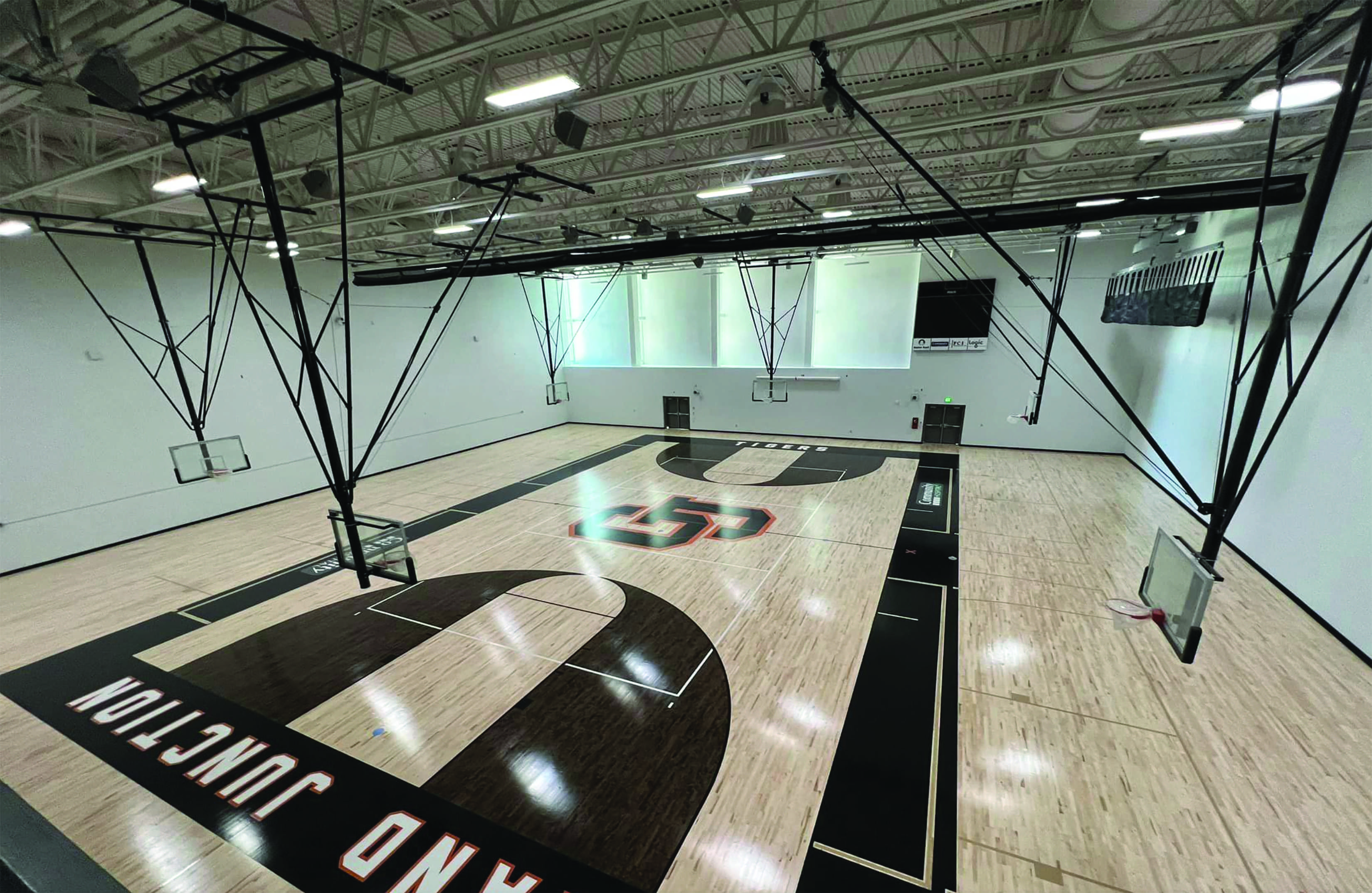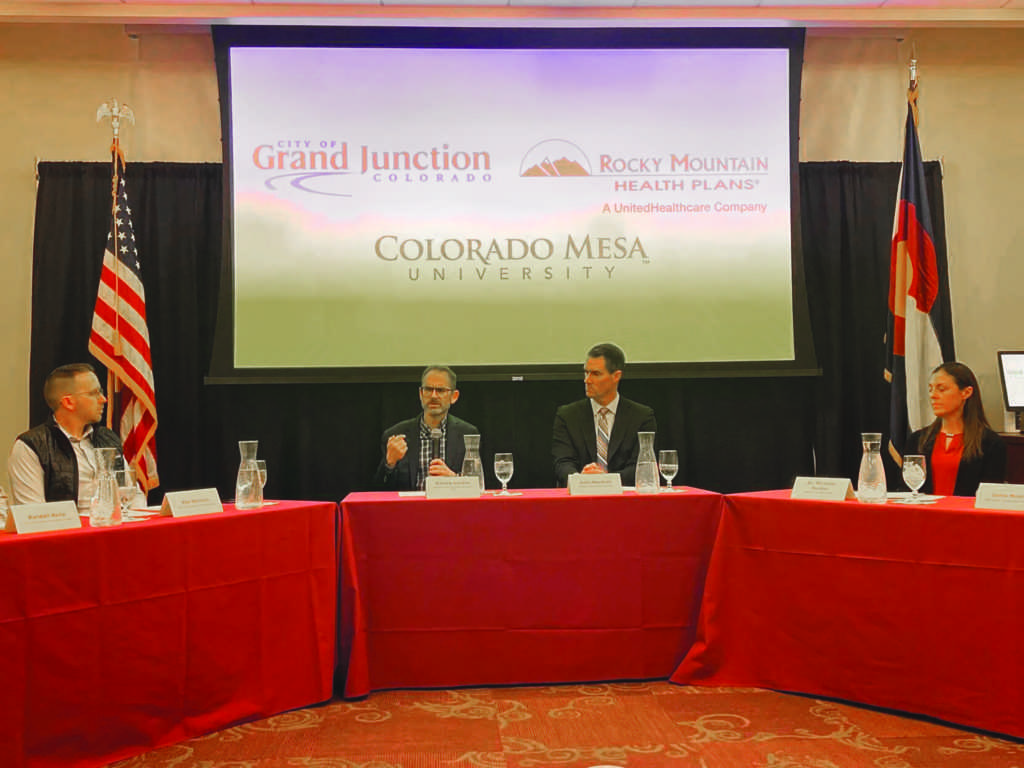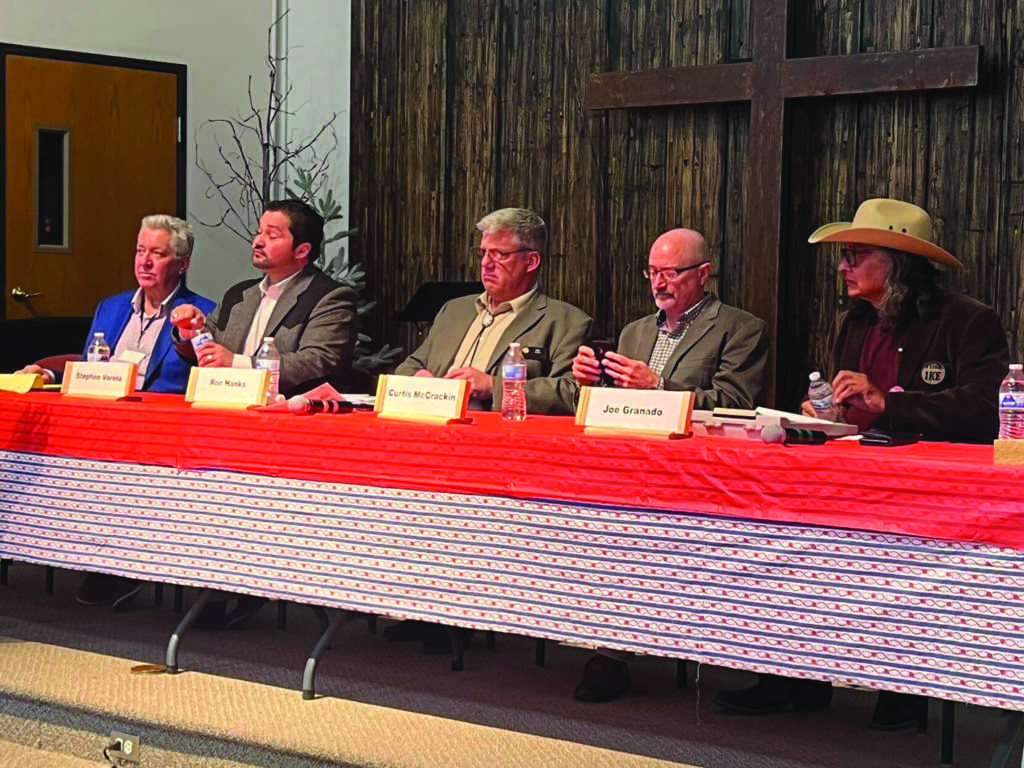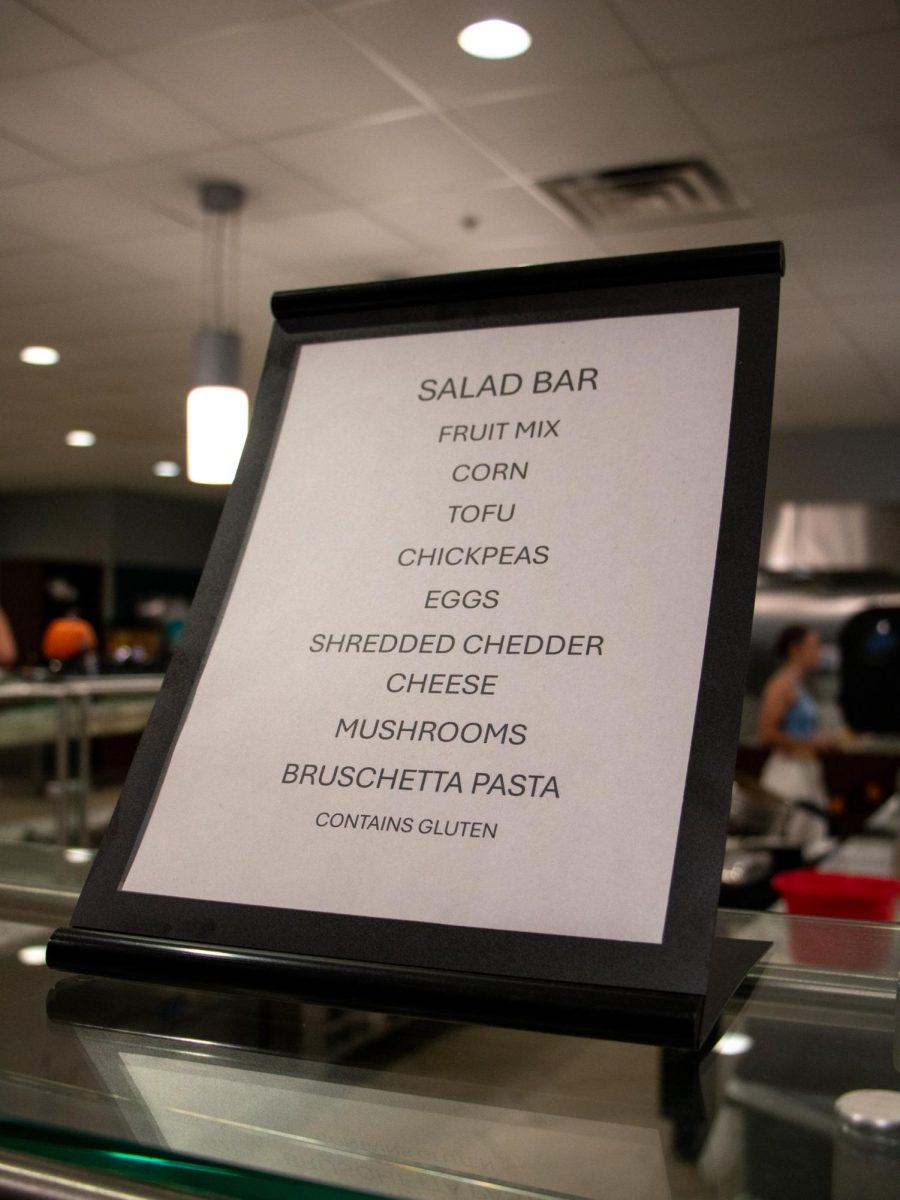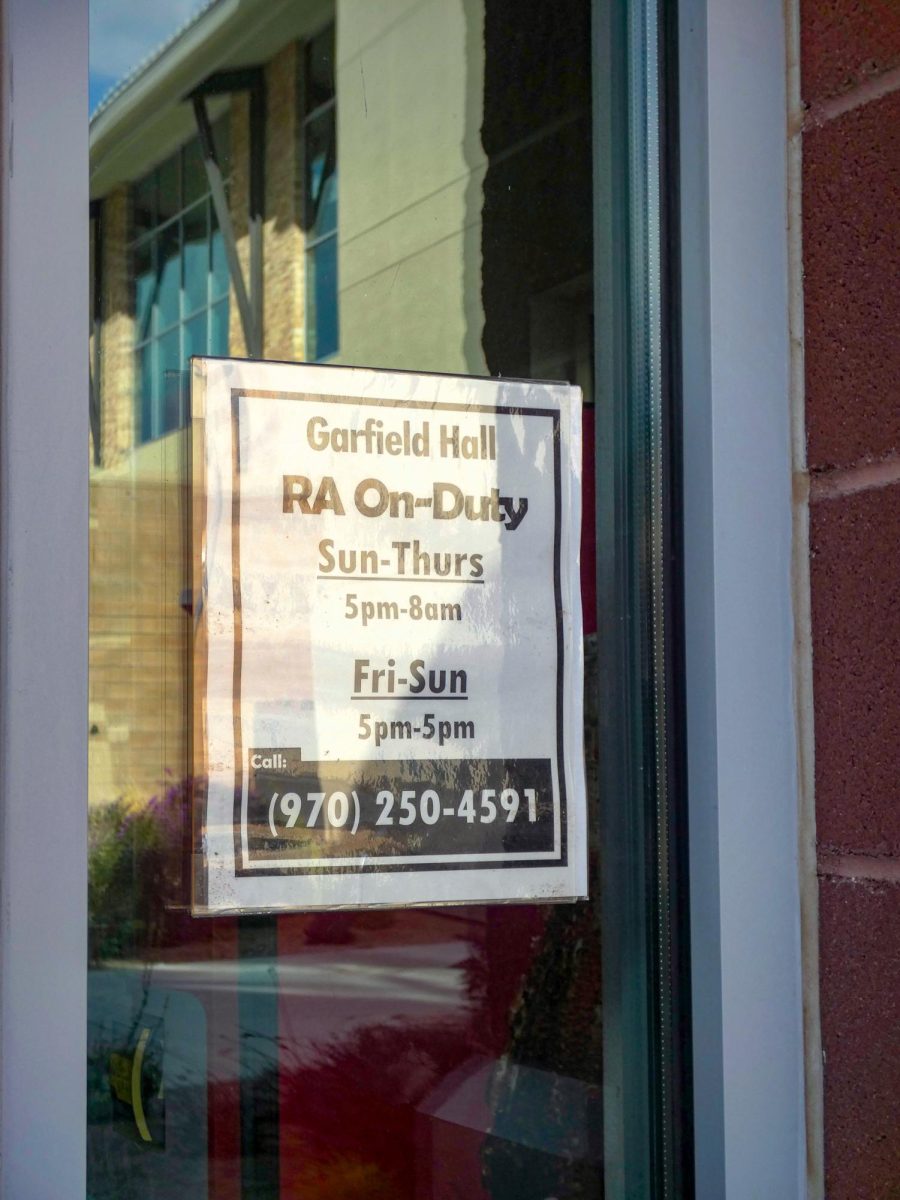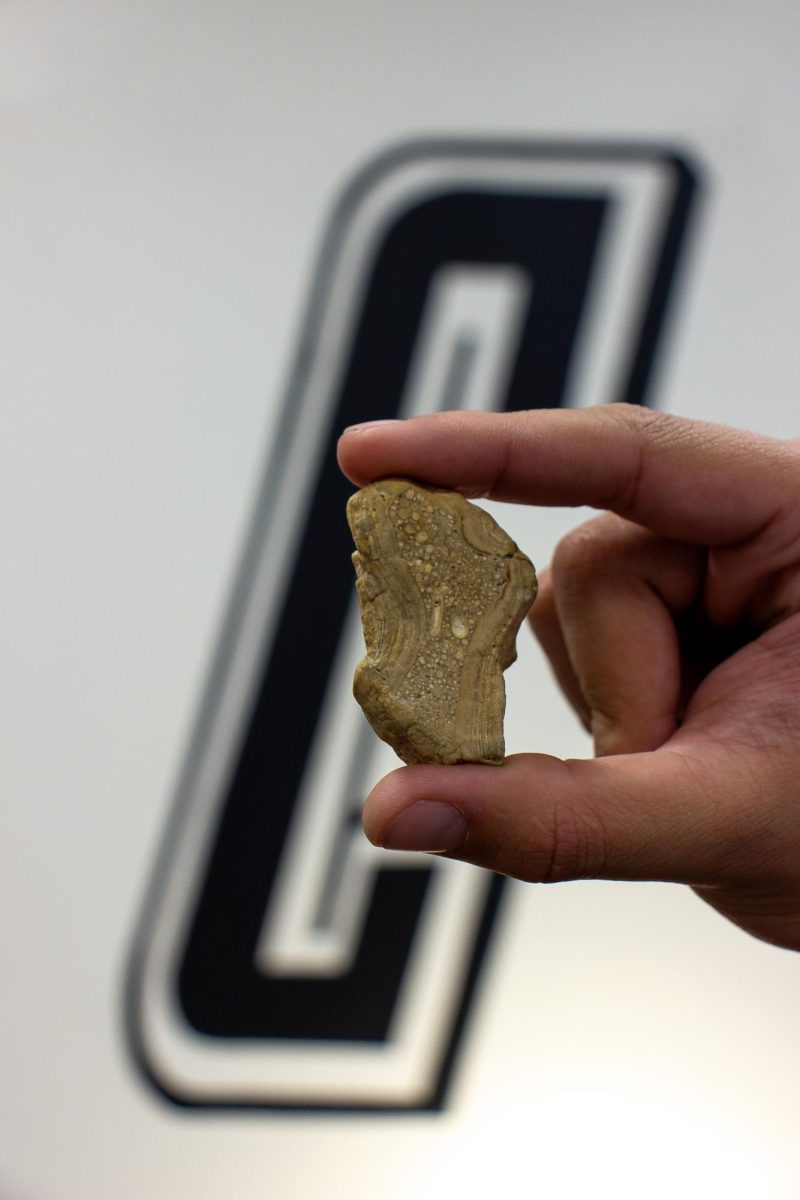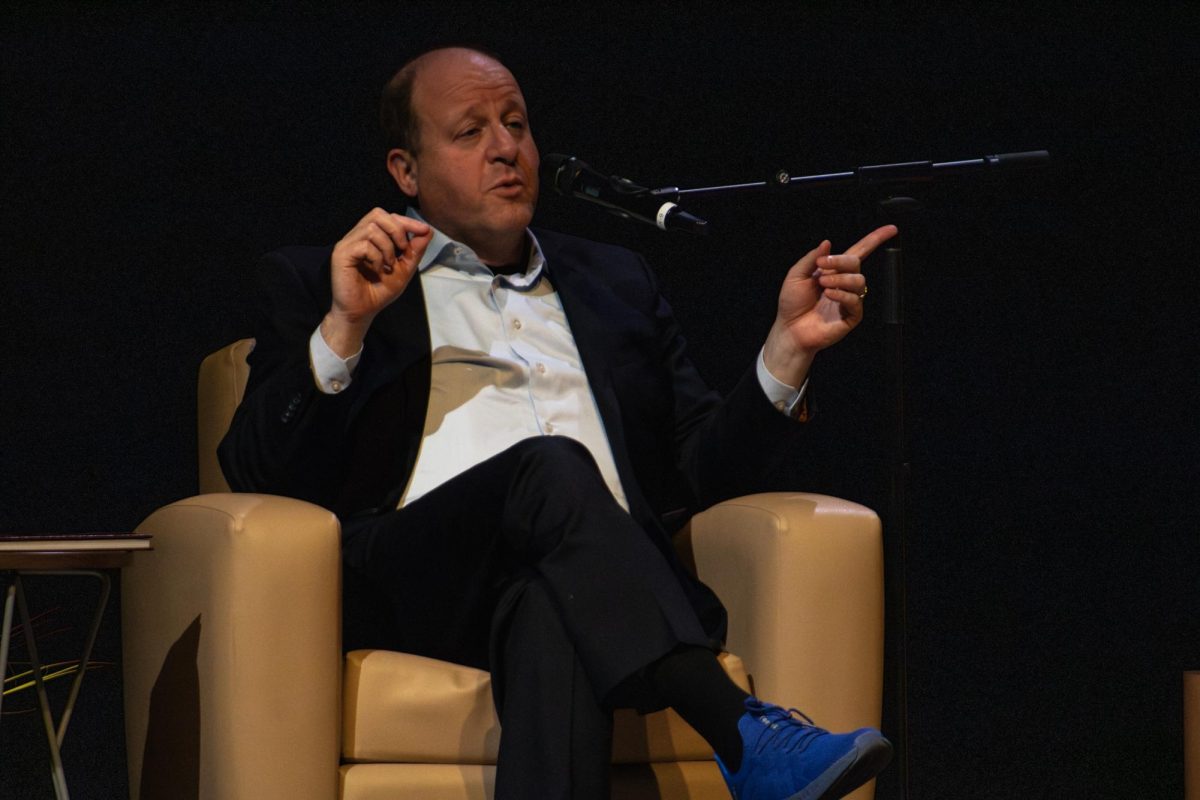Editor’s note: This article was updated to include the full version.
While it has become less common for the infamous Ku Klux Klan (KKK) to hide behind pointed white hoods, alt-right and white supremacy still exists in this day and age.
This includes ties to Grand Junction — and even Colorado Mesa University (CMU), and it can be traced to one prominent landmark on campus: Walker Field, named after Walter Walker.
Walker (1883-1956) was a prominent figure who stands out in the history of Grand Junction, whose contributions to the city were many. He help fund a number of public projects like the Grand Junction Regional Airport, and also served as a U.S. Senator, was the Editor in Chief of the Daily Sentinel and helped build much of what has become of the city today.
Amongst that portfolio was also an early membership with Grand Junction’s KKK chapter.
Walker’s grasp upon Grand Junction has carried on far past his death. For 65 years, the Grand Junction Regional Airport was named after the man. Even after the name was changed, Grand Junction’s airport terminal, fire station and Walker Boulevard continue to commemorate Walter Walker.
There’s also the Walter Walker State Wildlife Area in Grand Junction and the statues of Walker and his son Preston on 634 Main Street.
A few landmarks on CMU are also named in Walker’s honor. The reception area of the Moss Performing Arts Center was named after him. Although, the field on campus, which serves as home field for CMU’s soccer and lacrosse teams, is the most prominent.
Walker Field officially opened in 2006. Former owner of the Daily Sentinel Ken Johnson, who personally knew Walker and his son, Preston, helped contribute to the naming of the field. Johnson donated $1 million to the school at the time, and was one of the main advocates of naming the soccer field after Walker.
Walker, despite being a former Klansman, did use his platform as the EIC of the Daily Sentinel to protest the Klan’s presence in the Grand Valley.
“Walker was not a perfect man. His early affiliation with intolerant factions of the community are an unequivocal blight on his legacy,” CMU administration said in an issued statement regarding Walker Field.
“Walker was not a perfect man. His early affiliation with intolerant factions of the community are an unequivocal blight on his legacy.”
CMU administration in a statement regarding Walker field
Walker certainly paid the price for rebuking the KKK. He was assaulted in broad daylight in 1925 on Main Street, and his son was assaulted shortly after.
“It’s a chapter in his life that deserves rebuke. Also, the story of his valiant fight against the KKK, and the experience of violence against his person and family as a result, reflect that his commitment to defeating racist ideology became an important hallmark of his life,” CMU administration said.
“Walker fought the Klan and finally drove it out of town after four years of vicious infighting. The Klan ruled Colorado, and even had a Klansman for the governor. They ran Grand Junction,” Ken Johnson, former owner of the Daily Sentinel and colleague of Walker said.
“Walker fought the Klan and finally drove it out of town after four years of vicious infighting. The Klan ruled Colorado, and even had a Klansman for the governor. They ran Grand Junction.”
Ken Johnson
“Many of the buildings and facilities on campus reflect the names of people whose past may not be one of perfection; but whose contributions to the community and campus were profound, meaningful and to the greater good,” CMU administration said.
“Somehow we invent that [Walker] was the bad guy and his name should be stricken from the history of the town. Nonsense,” Johnson said. “It demeans every student on the campus, and certainly does not reflect well on anybody making such a stupid claim. They are just inventing an issue and I have no idea why they take pleasure in doing that.”
Johnson, a long time reporter, editor, publisher, author and historian argued that Walker wasn’t the ‘bad guy’.
“Without Walter Walker, there might not be a CMU today. In the mid-1920s, [Grand Junction] was a very small town. Walker was the conscience of the town and a visionary,” Johnson said. But even Johnson admits that he struggled with the idea of Walker being a Klansman, no matter how short lived it was.
“10 years ago I wondered why Walker joined, instead of fighting [the KKK] from day one. It dawned on me that [Walker] was very cautious of throwing rocks at a movement that was Patriotic and Christian. When it became obvious [the KKK] was political, he tolerated it because that was just politics, and he was a powerful, honest, visionary Democrat,” Johnson said.
“Being of African American decent and knowing full well that racists love to have monuments and public spaces named after their beloved leaders in celebration of their disgusting ‘heritage’, I would never endorse such a blatant miscarriage of administrative powers,” CMU student Michael Acker said.
While it is true that Walker was an early member of the Ku Klux Klan in Grand Junction in the early 20th century, he did fight the Klan, which indicates a change of heart.
“What pushed [Walker] into a 4-year fight was when Pres [Walker’s son] wound up at their Ouray Ave home with a concussion, a badly damaged eye and no recollection of how he and his bike got home. Pres’ injury and the phoniness of it launched Walter into war with the Klan, which already controlled the state and law enforcement / sheriff’s in 64 counties, including Mesa County and Grand Junction,” Johnson said.
Another misconception that some have of Walker was that he was responsible for introducing Grand Junction to the KKK.
“The guy who brought the Klan to GJ was Delmar B. Wright, an insurance and investment guy and Republican. While Walter had joined the Klan like all his friends and merchants advertising in his newspaper, and “social” organizations were the rule of the day, he quickly dropped out and abandoned it,” Johnson said.
Nonetheless, there’s a portion of CMU faculty and students who still scrutinize the decision to commemorate Walker through the soccer field on campus.
“[Walker] was too patient in rising to the fight, paid dearly for it, but using ink on paper won the battle. There is no KKK in GJ anymore nor will it ever come again. Thank [Walker],” Johnson said.
Johnson said that he didn’t think that Walker had “a racist bone in his body.’’
Although it could be argued Walter Walker wasn’t necessarily a racist, that doesn’t mean that Grand Junction has shed its ties to the past regarding racism.
Part 2
Based off of a 2017 U.S. Census Bureau report, 92.6 percent of Grand Junction residents identified as Caucasian, whereas only 1.1 percent of the Grand Junction populace reported to be exclusively black or African American.
According to the founder of Grand Junction’s Black Lives Matter movement, Jon Williams, “[Grand Junction] has deep racist roots.”
In the early 20th-century, Fruita, a 19-minute drive from Grand Junction, was considered a “sundown town.” A “sundown town” [which were common in the U.S. at the time], was essentially an area in which any black person found outside after dusk was a target for both violence and harassment.
However, that was in the early 1900’s. Many would assume that Grand Junction has progressed, and racism has been left behind as a thing of the past.
Unfortunately, that might not be the case.
On Valentine’s Day of 2017, KKK recruitment flyers were left in mailboxes and in driveaways throughout Grand Junction. The flyers fostered messages such as “Love Your Own Race,” “Stop Homosexuality and Race Mixing,” and stating that “God’s Laws Don’t Forget.” Also mentioned on the flyers was a phone number and website for people to join the Klan.
“Many Americans, especially in the more rural areas, seem to hold on tightly to the past and what they consider more “traditional” values. Typically bigotry, hate, and fear mongering are among those [values],” CMU student Michael Acker said.
Williams explained that Grand Junction has not shed those racist roots, and he felt the effects of racism first hand while he resided in the valley.
“I started at (CMU) in 2004, and I remember not really feeling like I was not any different from anyone else, but that soon changed. From people commenting on my hair to throwing things in it, to being asked to comment on the plight of black people during gen ed classes in a room full of people, to the fact that there wasn’t a lot of diversity on campus, I slowly learned I was different because I was black,” Williams said. “That transferred all the way to graduation and later into my adult life. So even though Grand Junction wasn’t part of the national conversation of race, we had a problem all our own, and Black Lives Matter became the solution.”
Initially, Williams remembered being hesitant to start a BLM movement in Grand Junction, but eventually decided to go through with it when his activist colleagues urged him to do so.
“The second the [Facebook] page launched we had a variety of negative feedback coming from all different types of people. I received direct messages from folks who thought that the goal was to oppress white people, which of course is not true. We received pictures of white folks killing black people. We were called terrorists and a plethora of horrible names. We could not block people from our page fast enough. Even though people did not know what we looked like, it was clear they did not want us in good old Grand Junction,” said Williams.
While Williams resided in Mesa County, he recalls the direct and indirect racism that he felt. He also mentioned that racism was more prevalent in Grand Junction than many other cities in Colorado.
“I experienced the spectrum of racism from macroaggressions to people calling me the n-word as a way to make me feel small. I experienced smear campaigns as well to folks purposefully creating counter-events to make sure my voice would not be heard. I had folks call or send emails to my place of employment for my work in BLM. In the course of one year, there were two separate incidents of KKK flyers being disseminated in the community,” Williams said.
Williams, who had lived in Grand Junction for over a decade, wasn’t the only one who had experienced racism. He noted that he’d heard many different instances of “bullying, teacher’s dismissing the needs of black students, businesses failing, cops stopping people of color as they walk down the street and many more.”
“I could honestly say I have heard of hundreds (of cases of racism in the valley). You know there is a problem when people are more afraid of being called a racist than actually changing the behavior for which made them a racist,” Williams said.
While the police informed BLM that there was no active KKK presence in Grand Junction, it was made very apparent to Jon Williams and many others that racism was alive and well in the valley.
Williams, who attended CMU (Mesa State at the time), continued to reside in Grand Junction many years after he had graduated. However, he no longer lives in the valley, and instead lives in Oregon.
“I left Grand Junction June 5 for two clear reasons. One, there wasn’t any room for advancement in my career and two, blatant and overwhelming amounts of racism/homophobia. I was one of the lucky few who graduated college and got a job in my field, but being black in Junction either meant you were silently blacked or oppressed because of it,” Williams said.
CMU is intolerant of racism, as the school promotes equality. Over the last two years a number of civil rights advocates have visited CMU such as Nita Mosby Tyler, a national civil rights leader who lives in Denver and NFL veteran R.K Russell who delivered a message about equality, love and tolerance. Along with that, CMU recently celebrated Martin Luther King Jr’s “I Have a Dream” speech with Stephon Ferguson who lives and works at the King Foundation.
“We hope that when the athletes who attended Russell’s event stand for the national anthem on Walker field, they remember the messages of Russell, Tyler and Ferguson. And that they remember a Walter Walker who risked his life to speak and write the truth in defiance of corruption and racism in his community,” CMU administration said.
While CMU doesn’t support racism, and while Walter Walker may not be a symbol for racist ideology, that doesn’t mean that pockets of the alt-right and white supremacy have been extinguished.
Hate mongering ideologies are still present in Grand Junction, and indeed portions of the rest of the United States.
As Martin Luther King Jr. had said, “We must learn to live together as brothers or perish together as fools.”







